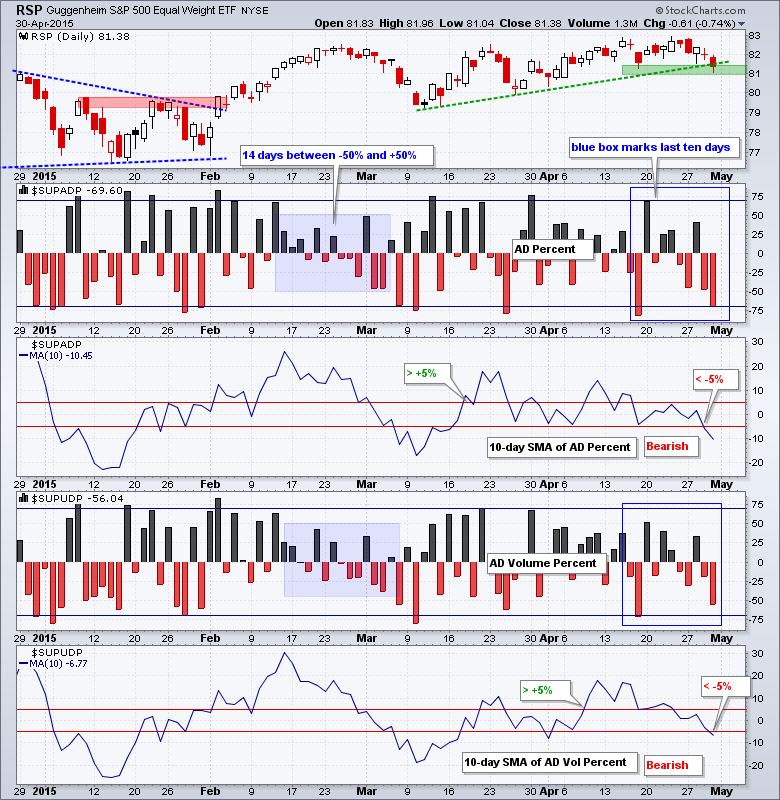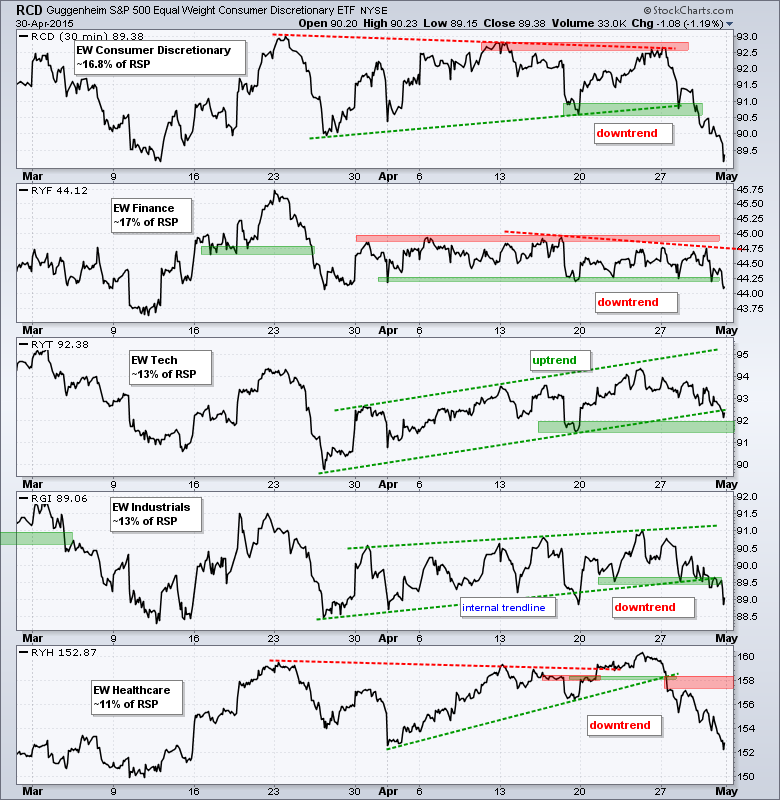Stocks started the day weak and finished weak. The S&P 500 plunged below 2095 on the open, chopped around and then dipped below 2090 in the afternoon. Small-caps led the way lower as IWM lost over 2%. All sectors were down with healthcare and technology leading the way. These two were the leaders on the way up and the market is losing its leadership, or perhaps just rotating into other groups. Energy bucked the selling pressure once again. The Metals & Mining SPDR (XME) and Copper Miners ETF (COPX) also bucked the selling pressure and produced gains as the Base Metals ETF (DBB) surged over 2%.
**This chart analysis is for educational purposes only, and should not
be construed as a recommendation to buy, sell or sell-short said securities**
Short-term Overview (Friday, 1-May-2015):
- Short-term breadth indicators are bearish.
- Four of the five equal-weight sectors are in downtrends.
- SPY is testing uptrend support.
- QQQ broke support to reverse its short-term uptrend.
- IWM broke support and continues to show relative weakness.
- TLT remains in a short-term downtrend.
- UUP remains in a short-term downtrend.
- USO broke pennant resistance and remains in an uptrend.
- GLD gave back its prior surge, formed a lower high and is in a volatile downtrend.
The Equal-Weight S&P 500 ETF (RSP) fell to its support zone over the last four days. A clean trend reversal has yet to occur, but the bulk of the evidence has turned short-term bearish for stocks. Short-term is the key term here because the bigger trends are still up. AD Percent and AD Volume Percent dipped below -50% as selling pressure actually intensified. AD Percent has been especially weak three of the last four days. The 10-day SMA for AD Percent turned bearish on Wednesday and the 10-day SMA for AD Volume Percent joined with a move below -5% on Thursday.
Four of the five equal-weight sectors are in short-term downtrends. The Equal-weight Healthcare ETF (RYH) was the first to break down on Monday, and the Equal-Weight Consumer Discretionary ETF (RCD) joined with a break down on Wednesday. The Equal-weight Industrials ETF (RGI) and the Equal-weight Finance ETF (RYF) broke down on Thursday. The Equal-weight Technology ETF (RYT) is the only one still classified in a short-term uptrend at this point and is poised for a support test.
**************************************************************
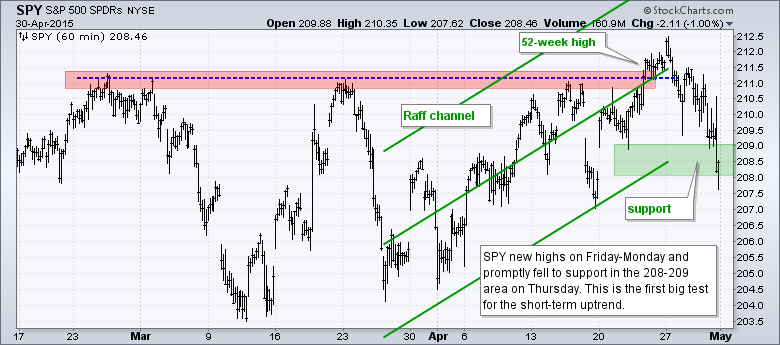
**************************************************************
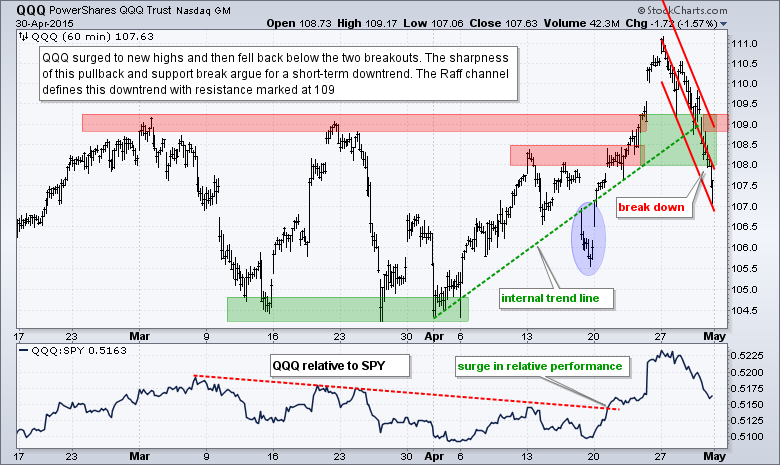
**************************************************************
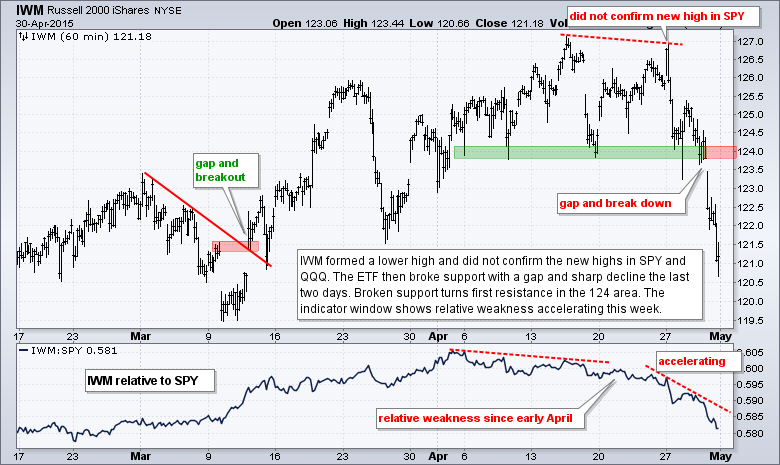
**************************************************************
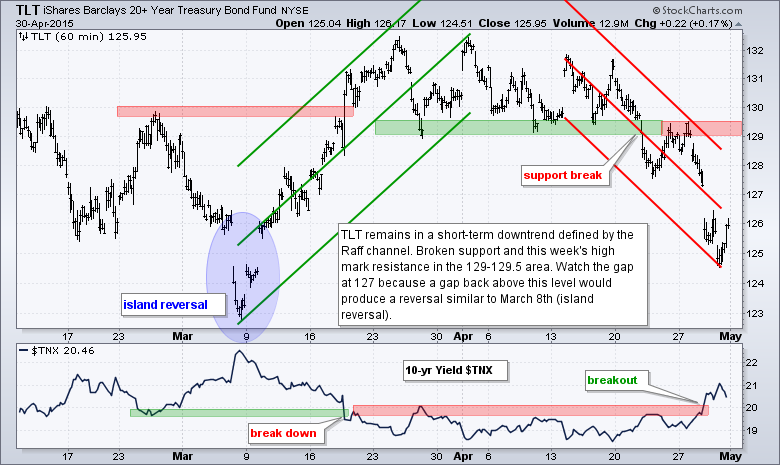
**************************************************************
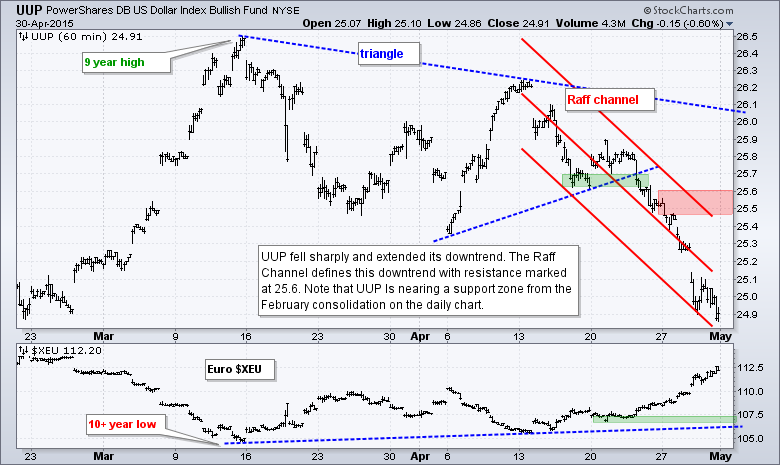
**************************************************************

**************************************************************
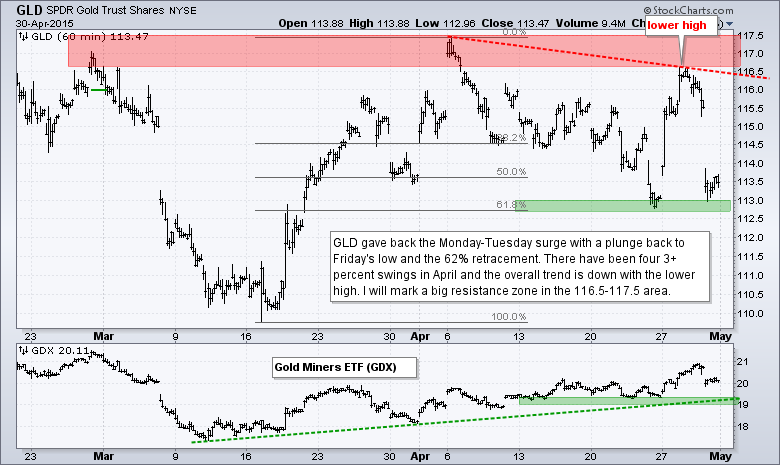
***************************************************************
Key Reports and Events (all times Eastern):
Fri - May 01 - 08:15 - ADP Employment Report
Fri - May 01 - 10:00 - Construction Spending
Fri - May 01 - 10:00 - ISM Manufacturing Index
Fri - May 01 - 10:00 - Michigan Sentiment
Fri - May 01 - 17:00 - Auto-Truck Sales
This commentary is designed to stimulate thinking. This analysis is not a recommendation to buy, sell, hold or sell short any security (stock ETF or otherwise). We all need to think for ourselves when it comes to trading our own accounts. First, it is the only way to really learn. Second, we are the only ones responsible for our decisions. Think of these charts as food for further analysis. Before making a trade, it is important to have a plan. Plan the trade and trade the plan. Among other things, this includes setting a trigger level, a target area and a stop-loss level. It is also important to plan for three possible price movements: advance, decline or sideways. Have a plan for all three scenarios BEFORE making the trade. Consider possible holding times. And finally, look at overall market conditions and sector/industry performance.

